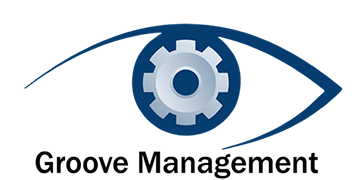When brainstorming, Do Not begin with the end in mind
In season 2 of Ted Lasso, Ted clevery states, “Don’t bring an umbrella to a brainstorm”. You want ideas to rain freely and his quote is right on point.
Steven Covey in The 7 Habits of Highly Effective People professes that you should “Begin with the end in mind”. Sage advice in most instances where you want a predictable outcome, but what if you are driving for creativity? In a world where we crave predictability and order it is very difficult to create time and space for creative ideas to flow. It requires a paradigm and attitude shift.
A more suitable quote for those hoping to brainstorm more effectively is Lewis Carroll’s quote “If you don’t know where you are going any road will take you there.” The famous quote comes from Alice’s Adventures in Wonderland, a mystical and creative adventure story that we all read as children. However, the quote is actually a paraphrase of the following exchange:
“Would you tell me, please, which way I ought to go from here?”
“That depends a good deal on where you want to get to,” said the Cat.
“I don’t much care where–” said Alice.
“Then it doesn’t matter which way you go,” said the Cat.
“–so long as I get SOMEWHERE,” Alice added as an explanation.
“Oh, you’re sure to do that,” said the Cat, “if you only walk long enough.”
Because we are so conditioned to make order of things in our world, we tend to struggle tapping into our creative sides. As a planner, myself I joke with friends and colleagues that I can be spontaneous if I plan to be. There is some truth to this. I can spend a Saturday with no plan other than to go with the flow, but then I have made a conscious effort to go with the flow for a discrete period of time.
Creativity and brainstorming requires a similar conscious effort to suspend our biases. Malcolm Gladwell in his book Blink: The Power of Thinking Without Thinking talks about the human brains ability to draw conclusions based on limited data and interactions. He refers to this capability as “Thin slicing”. It enables us to react to situations almost instinctively. Gladwell believes that through very limited observation we can make certain predictions with a very high degree of accuracy. One example in the book is of watching a professional tennis players serve and being able to determine very accurately whether the player will fault on the serve or hit it in based on the ball toss. Thin slicing is very helpful in helping to accelerate decision making in everyday life, but it creates bias and stereotyping which can be very detrimental to a creative process.
Creativity knows no bounds
Creativity knows no bounds. Most artists do not begin with the end in mind. They begin with an idea and a canvas, a hunk of clay, a piece of metal, a beat, a lyric or some spark. Predictable results are not what they are searching for. They are searching for something new, something fresh, something inspiring to them and hopefully inspiring to others as well. If your team is looking to tap into their creativity it is important to set some ground rules for brainstorming. The list below while not comprehensive has helped me when facilitating brainstorming sessions for teams:
All ideas are valid
Go for quantity not just quality
Use the phrase “Yes, and”
Withhold judgement
Write down everything that comes to mind
Hitch-hike, meaning build on the ideas of others
Encourage wild ideas
Brainstorming sessions are very healthy for teams. They create new bonds between colleagues and open participants to new ideas and new ways of thinking. In a linear world, non-linear thoughts can be very liberating. Albert Einstein said, “Logic will get you from A to B. Imagination will take you everywhere.”
My advice is to take time to brainstorm with your team more often. Use the exercise as a liberating opportunity to explore possibilities versus defined outcomes. Your team will be better served and so will your organization. Innovation begins when you choose a different path.



